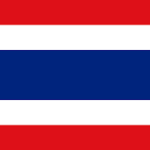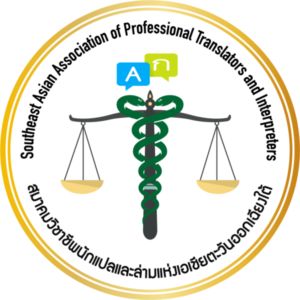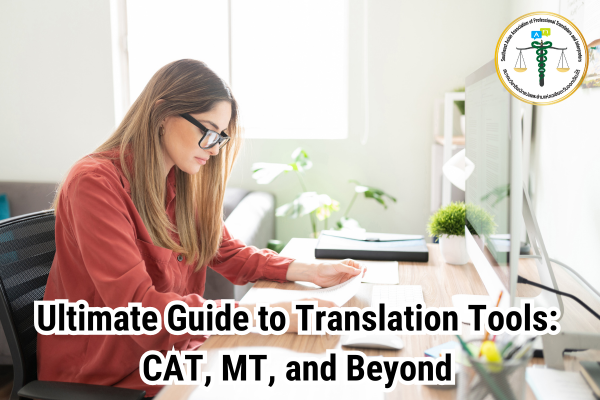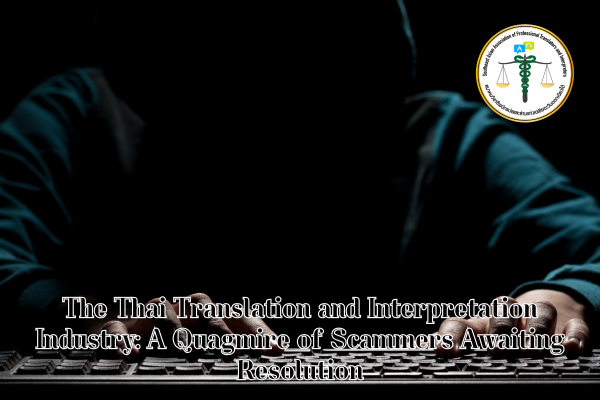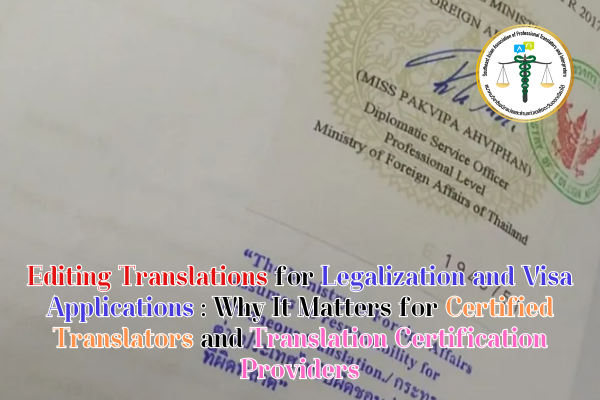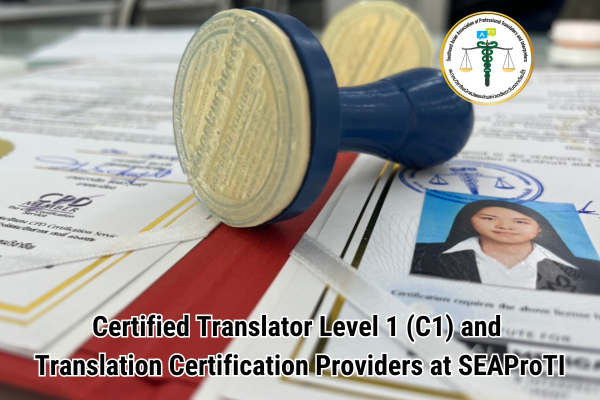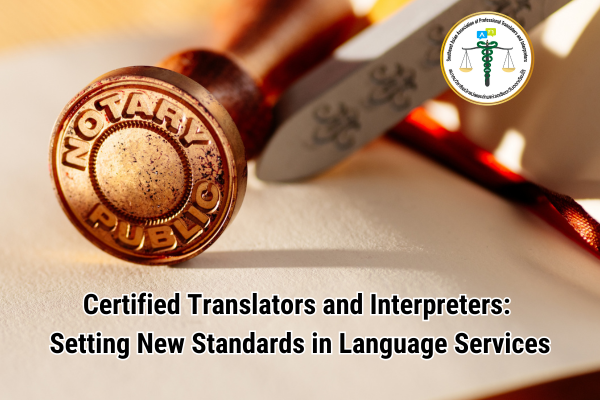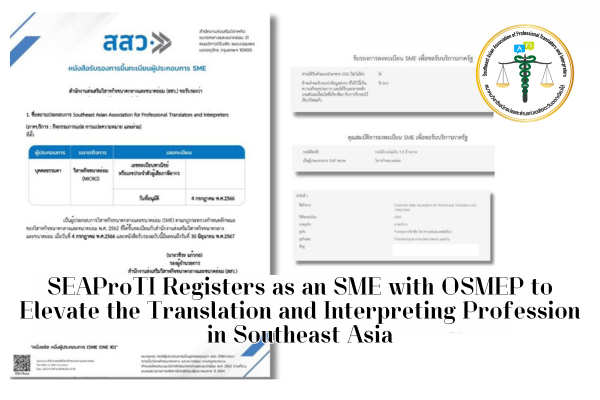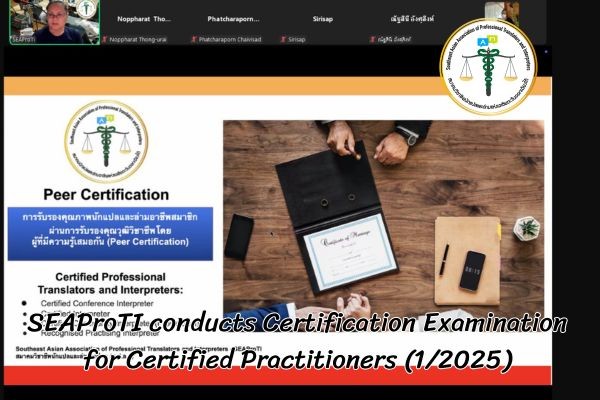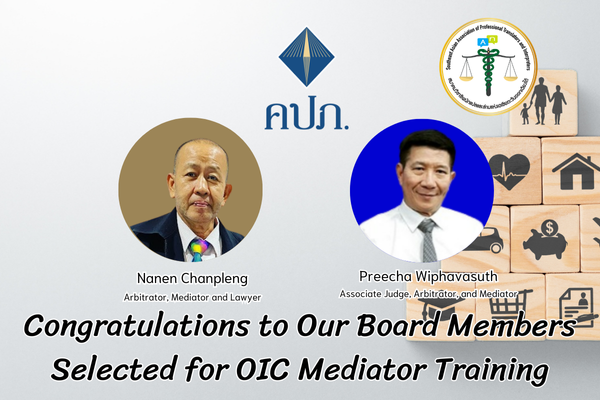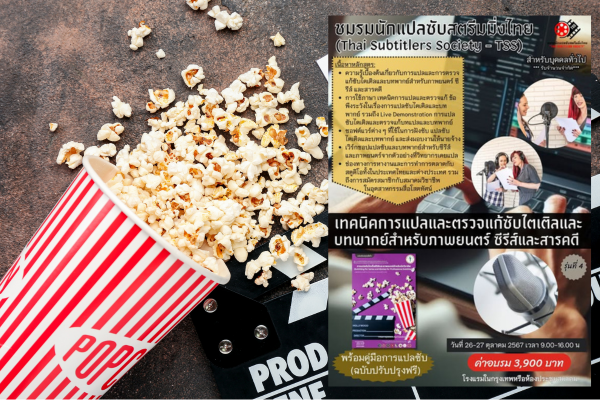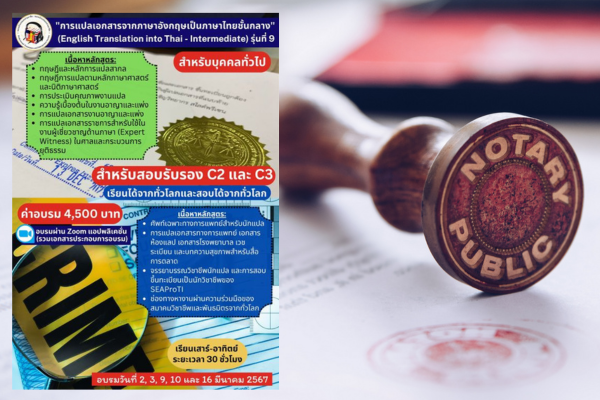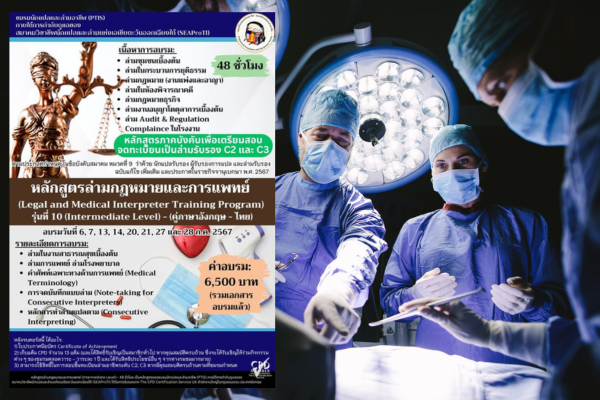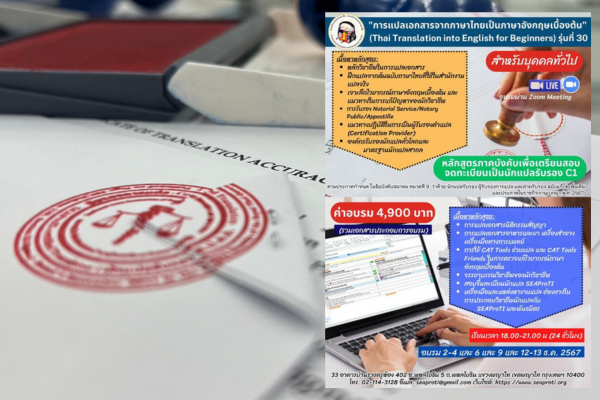Your Ultimate Guide to Translation Tools: CAT, MT, and Beyond
5 January 2025, Bangkok – In a world that is more connected than ever before, translation tools have become indispensable. Whether you’re browsing foreign websites, communicating with people across the globe, or managing multilingual content, translation technology is everywhere. But with so many tools available, it can be challenging to decide which one is right for your needs. Don’t worry! This article will guide you through the most common translation tools: Computer-Assisted Translation (CAT), Machine Translation (MT), and more. You’ll learn what they are, how they work, and how they make our world smaller and more connected.
What Are CAT Tools?
CAT tools, or Computer-Assisted Translation tools, are software applications designed to help human translators work more efficiently and accurately. Unlike Machine Translation (MT), which automatically translates text, CAT tools rely on human translators but provide invaluable assistance throughout the process. These tools are essential for professionals handling large-scale or complex projects where accuracy and consistency are key.
How Do CAT Tools Work?
Imagine you’re translating a lengthy technical manual. Instead of starting from scratch for each sentence, CAT tools use Translation Memory (TM) to store previously translated content. If you’ve already translated the phrase “user manual” as “manual del usuario” in Spanish, the tool will suggest it the next time the phrase appears. This not only saves time but ensures consistency across your project.
Additional features include:
-
Glossaries: A repository of specific terms and their approved translations.
-
Alignment Tools: These match original and translated texts for consistency.
-
Segmenting: CAT tools divide the text into manageable sections, often by sentence or phrase, making the translation process more structured.
Popular CAT Tools:
-
SDL Trados Studio: A leading choice for professional translators with advanced features like automatic quality checks.
-
memoQ: Known for its user-friendly interface and collaborative functions.
-
Wordfast: A budget-friendly alternative, ideal for freelancers.
-
OmegaT: An open-source tool that’s accessible to all.
What Is Machine Translation (MT)?
Machine Translation (MT) uses artificial intelligence and algorithms to translate text from one language to another. Unlike CAT tools, MT works independently of human input during the translation phase. MT is best for situations where speed and convenience outweigh the need for perfect accuracy.
How Does MT Work?
MT systems analyze massive datasets of bilingual text to identify patterns and rules for translation. Thanks to advancements in Neural Machine Translation (NMT), modern MT tools produce results that sound more natural than ever. However, they still struggle with nuances like idioms or cultural references. For example, translating “it’s raining cats and dogs” literally into another language might confuse readers without human intervention to provide context.
Types of MT:
-
Rule-Based MT (RBMT): Relies on predefined linguistic rules and dictionaries.
-
Statistical MT (SMT): Uses statistical models to predict translations based on probabilities.
-
Neural MT (NMT): Utilizes deep learning to improve fluency and context understanding.
Popular MT Tools:
-
Google Translate: Fast, free, and supports over 100 languages.
-
DeepL: Renowned for its natural and accurate translations, especially for European languages.
-
Microsoft Translator: Integrated with Microsoft Office for seamless use.
CAT vs. MT: Which Should You Use?
The choice between CAT and MT depends on your needs:
-
Use CAT tools when precision, consistency, and human expertise are required. They’re ideal for large-scale projects like translating websites, legal documents, or marketing materials.
-
Use MT when you need a quick and general understanding of a text, such as translating emails or browsing foreign content. However, for formal or critical projects, MT should always be combined with Post-Editing by a human translator.
Combining CAT and MT:
Many professionals use both tools together. For instance, they may start with an MT output to save time, then refine it using CAT tools to ensure quality and consistency.
Other Translation Tools You Should Know About
1. Post-Editing Tools
Post-Editing of Machine Translation (PEMT) is the process of refining MT output. These tools streamline the editing process by identifying errors, improving fluency, and ensuring the final product meets professional standards.
2. Translation Management Systems (TMS)
TMS platforms are used by organizations to manage complex multilingual projects. They handle workflows, from assigning tasks to tracking progress, and integrate with CAT and MT tools.
Popular TMS options include:
-
Smartling: A cloud-based platform for managing localization.
-
Memsource: Combines TMS and CAT features in one platform.
-
Transifex: Designed for translating apps and software.
3. Terminology Management Tools
Consistency is critical in specialized fields like medicine or law. Terminology management tools ensure that technical terms are used correctly and consistently across all translations. Examples include SDL MultiTerm and TermBase.
4. Speech Recognition Software
Some tools allow translators to dictate their translations instead of typing, which can speed up the process. This is especially useful for translating spoken content or working on-the-go.
The Future of Translation Tools
As technology continues to advance, translation tools are becoming smarter and more intuitive. Here are a few trends shaping the future:
-
Context Awareness: Future tools will better understand cultural and linguistic nuances, reducing errors in idiomatic or context-heavy translations.
-
Real-Time Translation: Enhanced speech-to-text and live translation capabilities are already making global communication seamless.
-
AI-Powered Collaboration: AI will improve team collaboration by predicting workflows and identifying potential bottlenecks.
-
More Languages: Expanding support for underrepresented languages will help bridge communication gaps in even the most remote regions.
However, even as these tools evolve, they won’t replace human translators. Machines excel at processing data, but only humans can interpret cultural subtleties, emotions, and creative expressions with accuracy.
Wrapping Up
Whether you’re a professional translator, a business owner, or someone exploring a foreign language, translation tools are your ally. CAT tools enhance productivity and consistency, MT provides fast and convenient translations, and other specialized tools cater to specific needs. By understanding how and when to use these tools, you can break language barriers and connect with the world more effectively.
Invest in the right tools for your needs, and remember: while technology can do a lot, it’s the human touch that ensures your message resonates across cultures.
About SEAProTI’s certified translators, translation certification providers, and certified interpreters:
The Southeast Asian Association of Professional Translators and Interpreters (SEAProTI) has officially announced the criteria and qualifications for individuals to register as “Certified Translators,” “Translation Certification Providers,” and “Certified Interpreters” under the association’s regulations. These guidelines are detailed in Sections 9 and 10 of the Royal Thai Government Gazette, issued by the Secretariat of the Cabinet under the Office of the Prime Minister of the Kingdom of Thailand, dated July 25, 2024, Volume 141, Part 66 Ng, Page 100.
To read the full publication, visit: the Royal Thai Government Gazette
คู่มือที่ดีที่สุดสำหรับเครื่องมือการแปล: CAT, MT และอื่น ๆ
5 มกราคม 2568, กรุงเทพมหานคร – เครื่องมือการแปลกลายเป็นสิ่งที่ขาดไม่ได้ ไม่ว่าคุณจะกำลังท่องเว็บไซต์ต่างประเทศ สื่อสารกับผู้คนทั่วโลก หรือจัดการเนื้อหาหลายภาษา เทคโนโลยีการแปลอยู่ทุกที่ แต่ด้วยเครื่องมือที่มีอยู่มากมาย อาจเป็นเรื่องท้าทายที่จะตัดสินใจว่าเครื่องมือใดเหมาะกับความต้องการของคุณ ไม่ต้องกังวล! บทความนี้จะนำคุณไปสู่เครื่องมือการแปลที่พบมากที่สุด: การแปลด้วยคอมพิวเตอร์ช่วย (CAT), การแปลด้วยเครื่องจักร (MT) และอื่น ๆ คุณจะได้เรียนรู้ว่าเครื่องมือเหล่านี้คืออะไร ทำงานอย่างไร และทำให้โลกของเราเป็นไปในทิศทางเดียวกันมากขึ้นได้อย่างไร
เครื่องมือ CAT คืออะไร?
เครื่องมือ CAT หรือ การแปลด้วยคอมพิวเตอร์ช่วย (Computer-Assisted Translation tools) เป็นซอฟต์แวร์ที่ออกแบบมาเพื่อช่วยนักแปลทำงานได้อย่างมีประสิทธิภาพและแม่นยำยิ่งขึ้น ต่างจากการแปลด้วยเครื่องจักร (Machine Translation – MT) ซึ่งจะแปลข้อความโดยอัตโนมัติ เครื่องมือ CAT ยังคงต้องพึ่งพานักแปลมนุษย์ แต่จะให้ความช่วยเหลือที่มีคุณค่าตลอดกระบวนการ เครื่องมือเหล่านี้จำเป็นสำหรับผู้เชี่ยวชาญที่รับมือกับโครงการขนาดใหญ่หรือซับซ้อนซึ่งต้องการความถูกต้องและสอดคล้องกัน
เครื่องมือ CAT ทำงานอย่างไร?
ลองจินตนาการว่าคุณกำลังแปลคู่มือเทคนิคที่ยาวเหยียด แทนที่จะเริ่มแปลทุกประโยคจากศูนย์ เครื่องมือ CAT จะใช้ Translation Memory (TM) เพื่อบันทึกเนื้อหาที่แปลไว้ก่อนหน้านี้ หากคุณเคยแปลวลี “user manual” เป็น “คู่มือผู้ใช้” ไว้ในภาษาไทย เครื่องมือนี้จะเสนอวลีดังกล่าวอีกครั้งในครั้งถัดไปที่พบวลีนี้ วิธีนี้ช่วยประหยัดเวลาและรับรองความสม่ำเสมอในโครงการของคุณ
ฟีเจอร์เพิ่มเติม ได้แก่:
-
Glossaries: คลังคำศัพท์เฉพาะและการแปลที่ได้รับการยืนยัน
-
Alignment Tools: จับคู่ข้อความต้นฉบับและข้อความแปลเพื่อความสอดคล้อง
-
Segmenting: เครื่องมือ CAT จะแบ่งข้อความออกเป็นส่วนที่จัดการได้ง่าย เช่น ประโยคหรือวลี เพื่อให้กระบวนการแปลมีโครงสร้างมากขึ้น
เครื่องมือ CAT ยอดนิยม:
-
SDL Trados Studio: ตัวเลือกยอดนิยมสำหรับนักแปลมืออาชีพ พร้อมฟีเจอร์ขั้นสูง เช่น การตรวจสอบคุณภาพอัตโนมัติ
-
memoQ: เป็นที่รู้จักในด้านอินเทอร์เฟซที่ใช้งานง่ายและฟังก์ชันการทำงานร่วมกัน
-
Wordfast: ตัวเลือกที่ประหยัด เหมาะสำหรับนักแปลอิสระ
-
OmegaT: เครื่องมือโอเพ่นซอร์สที่ทุกคนสามารถเข้าถึงได้
การแปลด้วยเครื่องจักร (MT) คืออะไร?
การแปลด้วยเครื่องจักร (MT) ใช้ปัญญาประดิษฐ์และอัลกอริทึมในการแปลข้อความจากภาษาหนึ่งไปยังอีกภาษาหนึ่ง ต่างจากเครื่องมือ CAT ซึ่งทำงานร่วมกับมนุษย์ MT ทำงานได้อย่างอิสระในระยะการแปล MT เหมาะสำหรับสถานการณ์ที่ความเร็วและความสะดวกสำคัญกว่าความถูกต้องสมบูรณ์แบบ
MT ทำงานอย่างไร?
ระบบ MT วิเคราะห์ข้อมูลจำนวนมหาศาลจากข้อความสองภาษาเพื่อระบุรูปแบบและกฎการแปล ด้วยความก้าวหน้าใน Neural Machine Translation (NMT) เครื่องมือ MT สมัยใหม่สามารถสร้างผลลัพธ์ที่ฟังดูเป็นธรรมชาติมากขึ้นกว่าเดิม อย่างไรก็ตาม ยังมีข้อจำกัด เช่น การเข้าใจสำนวนหรือการอ้างอิงทางวัฒนธรรม ตัวอย่างเช่น หากแปล “it’s raining cats and dogs” เป็นภาษาไทย เครื่องมืออาจแปลตรงตัวว่า “ฝนตกแมวและสุนัข” ซึ่งอาจทำให้ผู้อ่านสับสนหากไม่มีการแก้ไขจากมนุษย์
ประเภทของ MT:
-
Rule-Based MT (RBMT): อาศัยกฎทางภาษาศาสตร์และพจนานุกรมที่กำหนดไว้ล่วงหน้า
-
Statistical MT (SMT): ใช้โมเดลทางสถิติในการคาดการณ์การแปลตามความน่าจะเป็น
-
Neural MT (NMT): ใช้การเรียนรู้เชิงลึกเพื่อปรับปรุงความลื่นไหลและความเข้าใจบริบท
เครื่องมือ MT ยอดนิยม:
-
Google Translate: รวดเร็ว ฟรี และรองรับมากกว่า 100 ภาษา
-
DeepL: มีชื่อเสียงในด้านการแปลที่เป็นธรรมชาติและแม่นยำ โดยเฉพาะภาษายุโรป
-
Microsoft Translator: รวมเข้ากับ Microsoft Office ได้อย่างลงตัว
CAT vs. MT: ควรเลือกใช้อันไหน?
การเลือกใช้ CAT หรือ MT ขึ้นอยู่กับความต้องการของคุณ:
-
ใช้ เครื่องมือ CAT เมื่อความแม่นยำ ความสม่ำเสมอ และความเชี่ยวชาญของมนุษย์เป็นสิ่งสำคัญ เหมาะสำหรับโครงการขนาดใหญ่ เช่น การแปลเว็บไซต์ เอกสารทางกฎหมาย หรือสื่อการตลาด
-
ใช้ MT เมื่อคุณต้องการเข้าใจข้อความอย่างรวดเร็วและทั่วไป เช่น การแปลอีเมลหรือการท่องเนื้อหาต่างประเทศ อย่างไรก็ตาม สำหรับโครงการที่เป็นทางการหรือสำคัญ MT ควรรวมกับการ แก้ไขหลังการแปล โดยนักแปลมนุษย์เสมอ
การผสมผสาน CAT และ MT:
มืออาชีพหลายคนใช้เครื่องมือทั้งสองร่วมกัน ตัวอย่างเช่น อาจเริ่มด้วยผลลัพธ์จาก MT เพื่อประหยัดเวลา จากนั้นปรับปรุงโดยใช้เครื่องมือ CAT เพื่อรับประกันคุณภาพและความสม่ำเสมอ
เครื่องมือการแปลอื่น ๆ ที่คุณควรรู้
1. เครื่องมือแก้ไขหลังการแปล (Post-Editing Tools)
การแก้ไขหลังการแปลด้วยเครื่องจักร (PEMT) เป็นกระบวนการปรับปรุงผลลัพธ์จาก MT เครื่องมือเหล่านี้ช่วยปรับปรุงการแก้ไขได้อย่างรวดเร็ว โดยการระบุข้อผิดพลาด ปรับปรุงความลื่นไหล และรับรองว่าผลลัพธ์สุดท้ายเป็นไปตามมาตรฐานวิชาชีพ
2. ระบบการจัดการการแปล (TMS)
แพลตฟอร์ม TMS ใช้โดยองค์กรเพื่อจัดการโครงการแปลหลายภาษาอย่างซับซ้อน ระบบเหล่านี้จัดการขั้นตอนการทำงาน ตั้งแต่การมอบหมายงานจนถึงการติดตามความคืบหน้า และผสานรวมกับเครื่องมือ CAT และ MT
ตัวเลือก TMS ยอดนิยม ได้แก่:
-
Smartling: แพลตฟอร์มบนคลาวด์สำหรับการจัดการงานแปล
-
Memsource: รวมคุณสมบัติของ TMS และ CAT ในแพลตฟอร์มเดียว
-
Transifex: ออกแบบมาสำหรับการแปลแอปพลิเคชันและซอฟต์แวร์
3. เครื่องมือการจัดการคำศัพท์
ความสม่ำเสมอเป็นสิ่งสำคัญในสาขาเฉพาะทาง เช่น การแพทย์หรือกฎหมาย เครื่องมือการจัดการคำศัพท์ช่วยให้มั่นใจได้ว่าคำศัพท์เฉพาะทางถูกใช้อย่างถูกต้องและสม่ำเสมอในทุกการแปล ตัวอย่างได้แก่ SDL MultiTerm และ TermBase
4. ซอฟต์แวร์จดจำเสียง
เครื่องมือบางชนิดอนุญาตให้นักแปลพูดคำแปลแทนการพิมพ์ ซึ่งช่วยเร่งกระบวนการได้ เครื่องมือนี้มีประโยชน์อย่างยิ่งสำหรับการแปลเนื้อหาเสียงหรือการทำงานระหว่างเดินทาง
อนาคตของเครื่องมือการแปล
เมื่อเทคโนโลยีพัฒนาไปเรื่อย ๆ เครื่องมือการแปลจะฉลาดและใช้งานง่ายขึ้น นี่คือแนวโน้มบางอย่างที่กำลังเปลี่ยนแปลงอนาคต:
-
การเข้าใจบริบท: เครื่องมือในอนาคตจะเข้าใจความละเอียดอ่อนทางวัฒนธรรมและภาษาได้ดีขึ้น ลดข้อผิดพลาดในการแปลสำนวนหรือข้อความที่เน้นบริบท
-
การแปลแบบเรียลไทม์: ความสามารถในการพูดเป็นข้อความและการแปลสดได้รับการปรับปรุงให้ราบรื่นยิ่งขึ้น
-
การทำงานร่วมกันโดยใช้ AI: AI จะปรับปรุงการทำงานร่วมกันในทีม โดยการคาดการณ์ขั้นตอนการทำงานและระบุคอขวดที่อาจเกิดขึ้น
-
รองรับภาษามากขึ้น: การเพิ่มการรองรับภาษาที่ไม่ได้รับการสนับสนุนจะช่วยเชื่อมช่องว่างทางการสื่อสารในภูมิภาคที่ห่างไกลที่สุด
อย่างไรก็ตาม แม้เครื่องมือเหล่านี้จะพัฒนาไปแค่ไหน ก็จะไม่สามารถแทนที่นักแปลมนุษย์ได้ เครื่องจักรเก่งในการประมวลผลข้อมูล แต่มีเพียงมนุษย์เท่านั้นที่สามารถตีความความละเอียดอ่อนทางวัฒนธรรม อารมณ์ และการแสดงออกทางความคิดสร้างสรรค์ได้อย่างถูกต้อง
สรุป
ไม่ว่าคุณจะเป็นนักแปลมืออาชีพ เจ้าของธุรกิจ หรือนักสำรวจภาษา เครื่องมือการแปลคือพันธมิตรของคุณ เครื่องมือ CAT ช่วยเพิ่มประสิทธิภาพและความสม่ำเสมอ MT ให้การแปลที่รวดเร็วและสะดวก และเครื่องมือเฉพาะทางอื่น ๆ รองรับความต้องการเฉพาะ โดยการเข้าใจวิธีการและเวลาใช้งานเครื่องมือเหล่านี้ คุณสามารถก้าวข้ามอุปสรรคด้านภาษาและเชื่อมต่อกับโลกได้อย่างมีประสิทธิภาพมากขึ้น
ลงทุนในเครื่องมือที่เหมาะสมกับความต้องการของคุณ และอย่าลืมว่า แม้เทคโนโลยีจะทำได้มากเพียงใด การสัมผัสของมนุษย์คือสิ่งที่ทำให้ข้อความของคุณมีความหมายในทุกวัฒนธรรม
เกี่ยวกับนักแปลรับรอง ผู้รับรองการแปล และล่ามรับรองของสมาคมวิชาชีพนักแปลและล่ามแห่งเอเชียตะวันออกเฉียงใต้
สมาคมวิชาชีพนักแปลและล่ามแห่งเอเชียตะวันออกเฉียงใต้ (SEAProTI) ได้ประกาศหลักเกณฑ์และคุณสมบัติผู้ที่ขึ้นทะเบียนเป็น “นักแปลรับรอง (Certified Translators) และผู้รับรองการแปล (Translation Certification Providers) และล่ามรับรอง (Certified Interpreters)” ของสมาคม หมวดที่ 9 และหมวดที่ 10 ในราชกิจจานุเบกษา ของสำนักเลขาธิการคณะรัฐมนตรี ในสำนักนายกรัฐมนตรี แห่งราชอาณาจักรไทย ลงวันที่ 25 ก.ค. 2567 เล่มที่ 141 ตอนที่ 66 ง หน้า 100 อ่านฉบับเต็มได้ที่: นักแปลรับรอง ผู้รับรองการแปล และล่ามรับรอง
